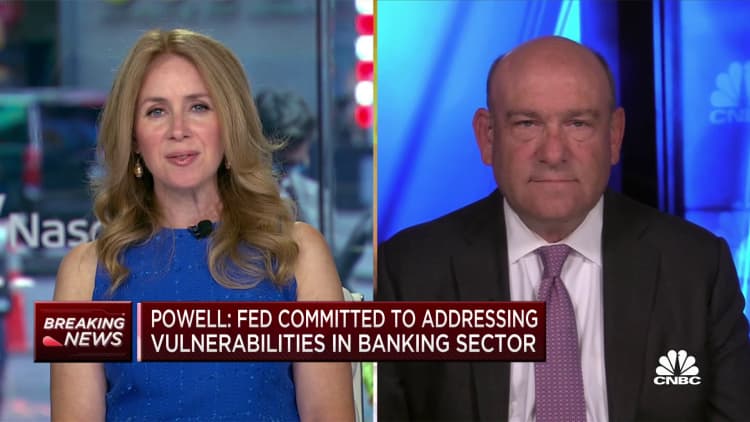[ad_1]
Images By Tang Ming Tung | Digitalvision | Getty Images
Workers saw their buying power grow in May for the first time in two years, as inflation continues to fall from its pandemic-era peak.
If the trend continues, it’d be welcome news for households, who could lean more on their paychecks instead of their savings or credit cards to support everyday spending, economists said.
“Real” hourly earnings increased by 0.2%, on average, this May versus May 2022, according to the U.S. Bureau of Labor Statistics.
More from Personal Finance:
IRS weighs guidance for employee retention tax credit
Firms ‘bombard’ small businesses with Covid-era tax credit ads
This one-time strategy can waive IRS tax penalties
Real earnings represent an average worker’s annual wage growth after accounting for increased costs for household goods and services, as measured by the consumer price index, or CPI.
A positive number means the average worker experienced an increase in their standard of living. A negative number means the opposite: that salaries can’t buy as much as they did a year ago.
May’s figure was the first positive annual reading since March 2021, according to BLS data. Before the latest reading, workers had endured 25 consecutive months of eroding buying power, the longest stretch on record, said Aaron Terrazas, chief economist at Glassdoor, a career site.
“This is clearly a function of inflation starting to come down,” Terrazas said.
“Real wages turned positive, and that’s great,” he added. “But many [people] are just playing catchup up for what’s happened over the past two years.”
‘Unprecedented’ pay jumps during pandemic
Wage growth started to spike in 2021 as workers enjoyed the benefits of a hot job market. Businesses’ demand for workers jumped to record highs as the U.S. economy reopened broadly after its pandemic-induced lull. Employers raised wages at the fastest pace in decades to compete for a limited pool of talent.
“Many companies did unprecedented pay increases during the pandemic,” said Julia Pollak, chief economist at ZipRecruiter.
In some cases, workers’ pay growth was strong enough to outrun inflation’s impact — especially for those who quit their jobs for higher-paying gigs elsewhere.

For the average person, however, inflation swamped those wage gains. Such households saw their bills for food, rent and filling up the gas tank rise faster than their paychecks.
The CPI, an inflation barometer, peaked at 9.1% in June 2022 — the highest level in four decades — but has since declined to 4% on an annual basis.
Meanwhile, wage growth has also declined but at a slower pace — translating to a net boost to Americans’ financial well-being in May relative to last year.
“The trend reversal is good news for consumers, who have remarkably weathered the decline well and are now set to become even stronger,” Pollak said.
Positive trajectory for household buying power
Other economic measures further suggest household well-being has improved.
For example, Americans’ “real” disposable personal income — both in the aggregate and per capita — has risen for 10 consecutive months since June 2022, according to most recent U.S. Bureau of Economic Analysis data.
These data sets are more inclusive than that of wage growth. They include interest income, rental income and dividends, for example, all of which have been strong, said Mark Zandi, chief economist at Moody’s Analytics.
This is clearly a function of inflation starting to come down.
Aaron Terrazas
chief economist at Glassdoor
The trend is a “very encouraging” sign for consumers, who are less likely to need to supplement income with excess savings or with additional debt, Zandi said.
Americans owed nearly $1 trillion in credit-card debt by the end of March, a record high, according to the Federal Reserve Bank of New York. Interest rates on credit cards are also at historic levels, at more than 20%.
Further, Moody’s estimates that excess savings amassed during the Covid-19 pandemic peaked in September 2021 at almost $2.5 trillion, roughly equal to 10% of U.S. economic output, Zandi said. By April, aggregate savings had fallen to $1.4 trillion, a “big drawdown,” he said.
While the contours of future inflation and wage growth are unclear, a continuation of positive real earnings and income would be good news for households and the economy, experts said.
“The key to avoiding [recession] is consumers continuing to spend at a consistent pace, and this is a reason to think that’s what we’re going to see here,” Zandi said of data on real income. “Consumers are the firewall between recession and a growing economy.
“The firewall is holding firm,” he added.
[ad_2]

